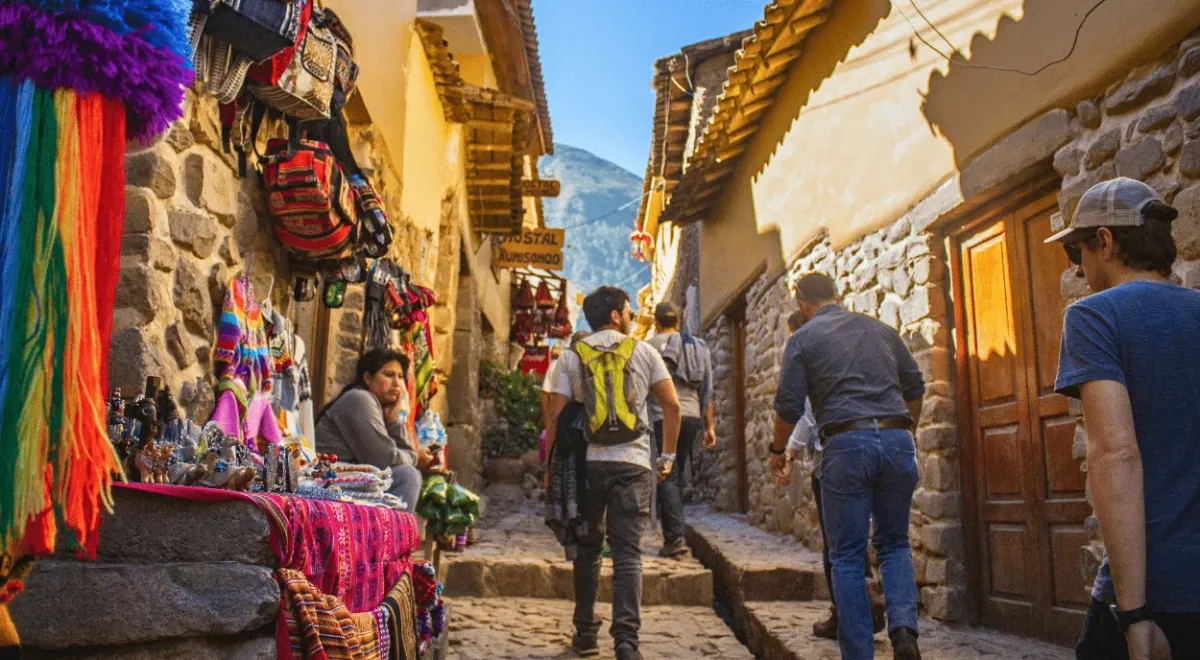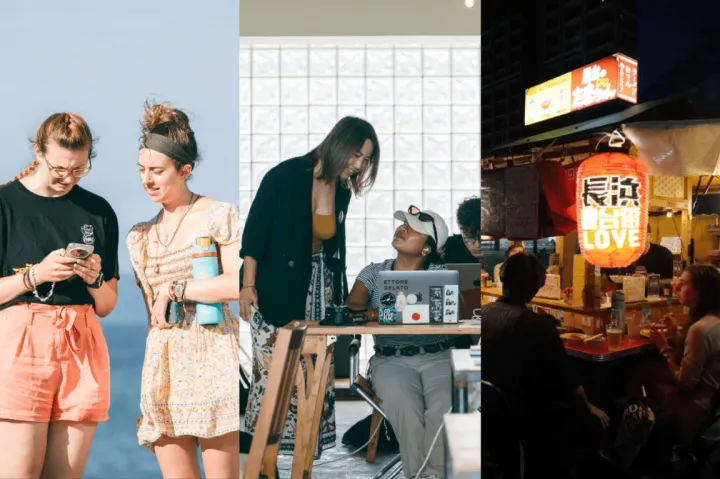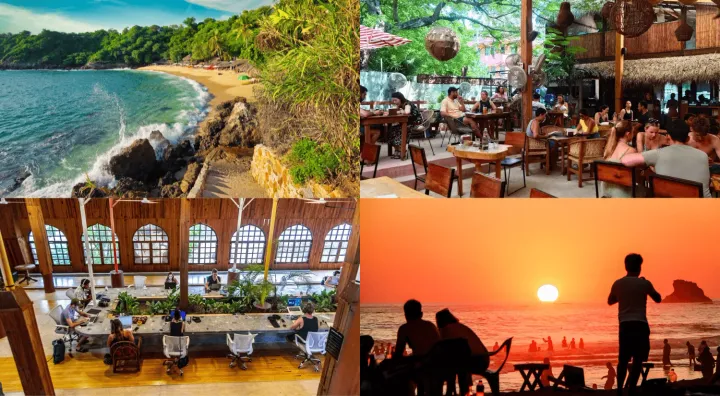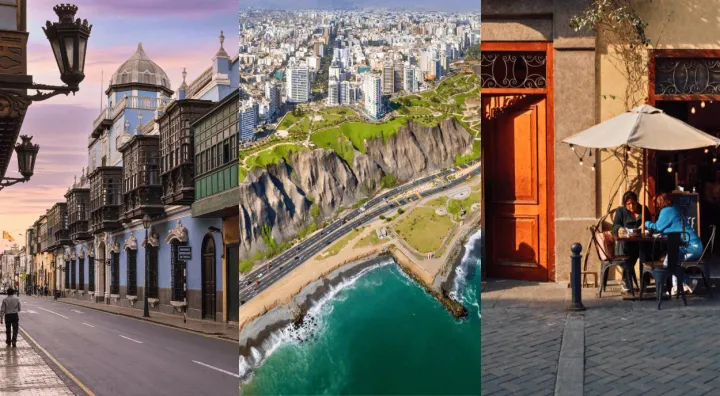Digital Nomad Guide to Cusco, Peru

Cusco isn’t just a stop before Machu Picchu. It’s also one of the best places in Peru for digital nomads, loved for its nature, community, gastronomy, and surprisingly good remote work setup. I’ve spent a few months there over the past couple of years, and there’s something that’s always pulling me back.
If you’re wondering whether Cusco is a good destination to base yourself while working remotely, the short answer is yes, but there are some factors to weigh in. Let’s dive into everything you need to know before you book your flight to Cusco.
My Experience as a Digital Nomad in Cusco
I first landed in Cusco thinking it would just be a quick stop before heading to the grand Machu Picchu, one of the Seven Wonders of the World. Instead, I fell in love with the city and decided to go back for a couple of weeks after my first trip.
Based on the experiences I heard before I arrived, I expected chaotic tourists and a slow internet connection, but Cusco really surprised me. While the rhythm is slower than the capital Lima, you can still find a lot of amenities and restaurants like in a medium-sized city. People are friendly, Wi-Fi connection is reliable most of the time, and the pace of life is just right.
Pros and Cons of Living in Cusco
While Cusco can be an amazing base for digital nomads, it also comes with some issues you need to know. Let’s dive into the pros and cons:
Pros
- Affordable cost of living: Compared to other cities, you can live well here without using up all your savings. This means more budget for trips and adventures on the weekends!
- Strong cultural scene: gastronomy, music, art, wellness, you name it! There’s almost always something happening, from traditional celebrations and parades to live music in small bars tucked in alleyways.
- Easy access to hikes and ruins: Yes, Machu Picchu beats all, but there’s so much more than this Wonder of the World. The beautiful Mountain of Seven Colors, the whimsy Sacred Valley, and the Humantay Lake with its turquoise waters, are just a bus ride away.
- Reliable Wi-Fi connectivity: Although it doesn’t offer the internet speed of a capital city, the infrastructure has evolved rapidly these past few years, making it easy to access a strong and reliable Wi-Fi connection in most coffee shops and accommodations.
- Digital nomad community: You’ll quickly find people to connect with, over some delicious pisco sours or a warm mate de coca. Plus, English is generally spoken!
Cons
- High altitude: Unfortunately, Cusco is at 3,400 meters above sea level, which means some headaches and a difficult adjustment for a lot of people. Even short walks uphill can take extra effort, so it will probably take you a bit of time to adjust.
- Cold weather at night: Nights are a bit chilly all year round, and heaters aren’t common in most accommodations. Remember to dress in layers indoors and bring enough warm clothes.
- Lots of tourists: The historic center is packed with tourists all year round, which is great for partying, but not the best if you’re looking for some quiet time. If that’s not your vibe, try staying in the outer areas.
What’s the Cost of Living in Cusco for Digital Nomads?
Even though Cusco is a very touristic destination, it can be quite affordable. A fully furnished one-bedroom apartment in a good area can cost around $500/month. Popular “menús del dia” will only set you back $3-4, while meals at a nicer restaurant can be around $15-20.
Taking taxis and Uber is pretty accessible too, they usually go about $2-3 to go across town, and public transportation like buses cost less than $1. Getting a couple of drinks on a night out rarely goes above $20.
Regarding activities, they can be a bit expensive if you go for tours and archeological sites outside of Cusco city. The entrance ticket to Machu Picchu costs around $45 for foreigners, and you need to add at least $150 for the price of the train to get there. However, you can still find some more accessible and fun activities, such as ATV Tours and adventure hikes, starting at just $29.
What Are the Visa Options for Digital Nomads in Cusco?
While Peru has been working on a dedicated digital nomad visa, it’s unfortunately not available yet. However, there are some options to work around it:
- Visa-free: Some Latin American and European countries don’t require a visa for stays up to 90 or 180 days, so check if your nationality is in this Peruvian immigration official list.
- Tourist visa: Peru offers 90 days on arrival to many countries, and it can be extended up to 180 days in some cases.
Working Remotely in Cusco as a Digital Nomad
Working in Cusco feels surreal… You can have a Zoom call with your team from a 300-year-old courtyard cafe, nothing can beat that! In general, it’s a pretty good city for remote work, though you’ll want to be thoughtful about your workspace and routine.
Internet and WiFi
Cusco doesn’t have the fastest internet in the world, but it’s still decent. You’ll be alright most of the time, with usually strong connections for video calls at coffee shops and newer apartments. Mobile data is great with 4G and 5G connections in the city center. I recommend getting an eSIM from providers like Yesim or Holafly to make sure you'll always be covered!
Work Spots, Laptop-Friendly Cafés and Coworking Spaces
There are lots of good options to choose from for remote work. Coworking spaces are growing, but coffee shops still dominate the space and are the go-to for most digital nomads.
Best Coworking Spaces in Cusco
- Ayni: A modern coworking space with high-speed internet, comfortable furniture, great location, and flexible plans (daily, weekly or monthly).
- Coworking Cusco: Centrally located, it offers accessible memberships and the perfect balance between work environment and community.
- Kuska: Smaller and more intimate, this is a great option if you’re looking for something more quiet to get work done.
Best Laptop-Friendly Cafés in Cusco
- Black Llama Coffee: My personal favorite, this hostel/coffee shop has excellent specialty coffee and a delicious menu, as well as a casual but comfortable space for working with strong, reliable Wi-Fi.
- Casa Ichu: Known for its aesthetic, this renovated old house turned bright café has healthy options and a dedicated coworking space, perfect for long working sessions.
- Flora - brunch & coffee: Trendy coffee shops that will delight you with its amazing views of the Andes. There’s plenty of space to open your laptop and get down to business.
Best Areas to Stay as a Digital Nomad in Cusco
Cusco is small enough to get around easily, but each neighborhood has a different feel. Where you decide to stay will determine your daily routine, from how quiet your mornings are to whether you’re grabbing coffee at trendy cafés or a lunch menu with locals at the market. Here are three neighborhoods we recommend for digital nomads:
Plaza de Armas (Historic Center)
This is the heart of Cusco, full of tourists and buzzing energy way into the night. If you’re looking to be in the middle of everything, with restaurants, coffee shops, and nightlife, this is where you want to stay. Just remember that there will be noise and crowds most of the time, but that’s exactly the charm for some people.
San Blas
Known for its bohemian vibes, San Blas is located above the Historic Center. Think narrow cobblestone streets, plenty of art galleries and coffee shops, and the classical blue doors and windows you see on your Instagram feed. The views are the best, but be prepared for lots of uphill walking (and the altitude will take up your energy!)
San Pedro
More local and budget-friendly, San Pedro is where you’ll find the popular San Pedro Market. This is perfect if you want to mingle with the locals. You’ll be surrounded by local shops, markets, and day-to-day life. It’s the best option if you want authenticity and lower rent, but you’ll need to walk a bit more to get to most coworking spaces and coffee shops.
Top Tips for Digital Nomads in Cusco
Living in Cusco as a nomad sounds like a dream, but a couple of tips can make your experience better. Here are some of the things I wish I knew before living there as a digital nomad:
- Take altitude seriously: Give yourself at least a few days to adjust before trying out a hike or intense workout session. Coca tea helps, but resting is key
- Get travel health insurance: Cusco’s high altitude and adventurous activities make having good coverage a must. Make sure your plan includes emergency evacuation. The nearest major hospitals are in Lima, and getting there can be pricey without coverage
- Learn basic Spanish: Even a couple of phrases go a long way, particularly outside touristy zones where English isn’t as common
- Pack layers: The weather can greatly vary in a day, with sunny days and colder nights. Having a jacket in hand will come in handy
- Watch out for pickpockets: Cusco is safe overall, but be careful in crowded festivals and markets
- Join hikes during the weekends: Besides Machu Picchu, you’ll find affordable day treks that are as beautiful and fun
- Find local communities and events: The best way to meet other nomads and expats in Cusco is by joining local digital nomad communities and checking out meetups and social events. It’s a great way to make friends, share tips, and discover hidden gems you wouldn’t find in a guidebook!
How Can I Get Around in Cusco?
Cusco is a relatively small city, so you’ll rarely need more than 20 minutes to cross the main areas. Walking is the best way, but be mindful of the cobblestone streets and steep hills.
Regarding public transportation, you’ll often find local buses and colectivos, which are pretty cheap with rides costing just a few cents. Taxis are also everywhere, and it’s usually a couple of bucks for rides within the city. You can either hail local taxis (remember there aren’t meters, so agree a price before you get in!) or use apps like Uber.
If you’re planning day trips around Sacred Valley, colectivos and combis (shared vans) are your go-to. They leave regularly, cost just a few dollars, and locals use them daily. Hiring a private taxi is another more comfortable option, but definitely more expensive.
Traffic in Cusco isn’t as chaotic as Lima, but the narrow streets can get jammed around the Plaza de Armas. For shorter distances, walking is always faster, and it’ll let you enjoy the lively markets, cute handmade stores, and maybe even grab a warm emoliente (traditional Peruvian herbal beverage).
What’s the Best Time to Visit Cusco?
Cusco basically has two distinct seasons: the dry season (May to September) and the rainy season (October to April). Temperatures stay regularly even year-round, but nights can get pretty chilly, especially in the dry months.
Dry season is the perfect time for hikes and day trips, with blue skies and the best weather. However, it’s also the busiest and most expensive time, particularly around June, because of the Inti Raymi Festival. On the other hand, there’s fewer crowds and greener landscapes in rainy season, but expect some heavy showers in the afternoons.
I recommend the shoulder months of November and March: fewer tourists, lower prices, and just enough sunny days to balance the rainy ones.
Top Things to See and Do in Cusco
Cusco is one of those places that just keeps surprising you. Even after you’ve visited Machu Picchu, there’s still so much to see, and you’ll never run out of things to do. Here are some of my favorite spots and experiences I’d recommend checking out while living in Cusco as a digital nomad:
1. Visit Machu Picchu
One of the Seven Wonders of the World is a must-see. You can choose to hop on the train for the comfortable route, or do the 5-day Salkantay Trek and connect with nature on your hike. Either way, you’ll end up standing at the grand Sun Gate and marvel at the citadel below. Make sure to book ahead since there are limited spots available, especially in high season.
2. Explore San Blas
This bohemian neighbourhood will enchant you with its narrow cobblestoned streets, artisan shops, and cozy coffee shops. Walk uphill for the best views of the city at the Mirador San Blas, or spend a lazy afternoon hopping between art galleries and coffee spots. Plus, get a gorgeous handmade baby alpaca sweater at a local shop!
3. Taste Local Fruits at San Pedro Market
The heart of Cusco’s local life. Here you can grab a fresh juice for less than a few bucks, try exotic local fruits like chirimoya, lucuma, and camu camu, and grab an affordable menu del día (daily lunch menu). It’s chaotic, authentic, and definitely worth a visit.
4. Hike Vinicunca (Rainbow Mountain)
At 5,000 meters above sea level approximately, this mountain is known as the Mountain of Seven Colors, and it’s worth the hike. The views are stunning once you get there. If you’d prefer to skip the crowds, head over to Palcoyo instead, a lesser-known and easier hike with amazing views too.
5. Day Trip to the Sacred Valley
Just a day trip away, the Sacred Valley is a place with magical energy. You can visit historical ruins like Ollantaytambo and Pisac, plus colorful markets and gorgeous mountain views.
6. ATV Adventure in Maras and Moray
Rent an ATV and ride through villages and open landscapes. You’ll pass the famous salt mines of Maras, and the circular terraces of Moray. Both of them are pretty unique!
7. Trek Lake Ausangate and 7 Lakes
This trek is perfect if you are an adventurer: you’ll hike past seven of the most turquoise lakes you’ll ever see, lots of cute alpacas, and the magnificent snowy mountain of Ausangate.
Ready to Live in Cusco as a Digital Nomad?

Join our global
digital nomad community
Join us for free
Freaking Nomads is supported by you. Clicking through our links may earn us a small affiliate commission, and that's what allows us to keep producing free, helpful content. Learn more




 Travel tips, hacks, and news
Travel tips, hacks, and news Exclusive travel discounts
Exclusive travel discounts Offers and promotions
Offers and promotions Digital nomad inspiration
Digital nomad inspiration Latest articles form our blog
Latest articles form our blog